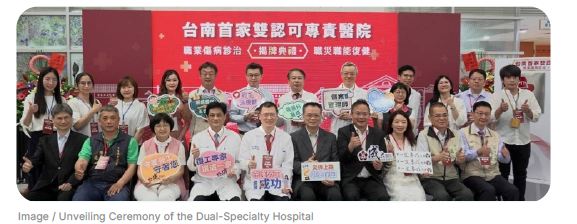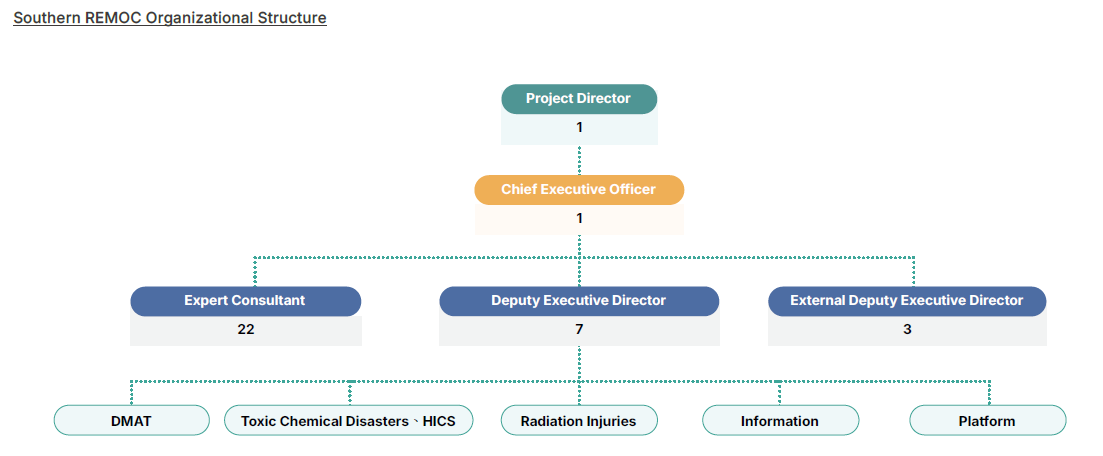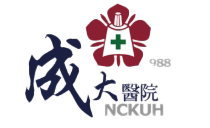Regional Medical Safety Network
Regional Medical Safety Network
-
Integrated Diagnosis and Treatment of Occupational Injuries and Diseases
The Hospital established the “Special Outpatient Clinic for Occupational Diseases” under the Department of Internal Medicine as early as 1990. In 2008, in response to national policy and social welfare needs, and with the support of the Council of Labor Affairs, it founded the “Occupational Injury and Disease Diagnosis and Treatment Center.” In 2010, it was renamed the “Occupational Injury and Disease Prevention Center” to handle occupational injury and disease-related services for workers in southern Taiwan. The Center provides workplace health care services for enterprises in the region, assists them in establishing safe working environments to prevent occupational diseases, and offers occupational medical personnel support and training services to medical institutions in the area, aiming to enhance the Center’s regional integration function and role.
In addition, the Hospital’s Department of Occupational and Environmental Medicine partnered with the Department of Occupational Therapy, College of Medicine, National Cheng Kung University to form the “Workplace Work Reinforcement Team.” Since 2005, it has undertaken services commissioned by the Occupational Safety and Health Administration, Ministry of Labor, establishing the “Work Reinforcement Center” to provide occupationally injured workers with services such as work ability evaluation and training, occupational rehabilitation, on-site job analysis, job redesign, return-to-work programs, and workplace health promotion. In 2023, the Hospital was certified by the Ministry of Labor as Tainan City’s first hospital with dual specializations in “Occupational Injury and Disease Diagnosis and Treatment” and “Occupational Functional Rehabilitation.” Accordingly, the “Occupational Injury and Disease Prevention Center” was renamed the “Integrated Services Center for Occupational Injury and Disease Diagnosis and Treatment,” and the “Work Reinforcement Center” was renamed the “Professional Institution for Occupational Functional Rehabilitation,” offering occupationally injured workers high-quality and comprehensive care services.
The integrated service team of NCKU Hospital collaborates with the occupational injury service team of the Tainan City Government to accelerate the recovery of occupationally injured workers through multiple “support mechanisms,” including providing legal consultation, assisting workers in handling disputes with employers, and helping apply for functional rehabilitation subsidies. These efforts encourage injured workers to continue rehabilitation at the Hospital. Through interdisciplinary collaboration between the public and private sectors, the impact of occupational injuries on workers’ lives is effectively reduced. With joint efforts across professional fields, the program addresses the physical, psychological, and social needs of injured workers to achieve better rehabilitation and return-to-work outcomes.

Greater Tainan Emergency Medical Services
-
EVT transferring system(EVTTS)
As the golden treatment window for acute ischemic stroke is only three hours, the speed of performing arterial thrombectomy or intravenous thrombolysis significantly affects patient outcomes. Since 2018, the Stroke Center of the Hospital has cooperated with the Tainan City Fire Department to provide frontline emergency personnel with a series of stroke education and training courses, establishing the “Tainan City Acute Stroke Assessment Emergency Medical System” to rapidly transport patients to hospitals capable of treating acute strokes.
Due to the limited number of physicians qualified for Endovascular Thrombectomy(EVT), not all critical care emergency hospitals offer this service. To further improve referral efficiency for acute stroke cases, the Stroke Center, in collaboration with the Institute of Biomedical Engineering of NCKU, developed the EVTTransfer System (EVTTS) in 2020 and partnered with the Tainan City Government to promote the “Acute Stroke Referral Quality Improvement Project.” The system officially launched in 2021, integrating the Fire Department and 13 emergency hospitals in Tainan City. It shortens inter-hospital referral communication time and reduces disability in acute stroke patients.

From its inception, the platform was developed to address the pain points of past referral processes, with the referring hospital’s needs (referral requests) as the starting point for its design. Through continuous system optimization, it has achieved significant results and was recognized with the 2024 National Innovation Award and National Medical Quality Award(NHQA) commendation. As of 2024, a total of 19 hospitals in the Taichung and Yunlin-Chiayi-Tainan regions have joined the referral network. Statistics show that EVTTS has improved referral efficiency by an average of 77 minutes, increased the thrombectomy rate by 26%, shortened the time to thrombectomy by 128 minutes, and improved favorable outcomes for thrombectomy patients by 36.6%.
Disaster Emergency Medical Response
-
Southern REMOC
Following the experiences of the 921 Earthquake and the SARS outbreak, Taiwan recognized the importance of round-the-clock emergency medical response information and coordination, particularly in the event of large-scale disasters that require cooperation and assistance from neighboring counties and cities. In response, the Ministry of Health and Welfare established six regional Emergency Operations Centers (rEOCs) nationwide, integrating horizontal activation across neighboring counties' fire rescue services, health administrations, and emergency medical systems, while enhancing emergency medical response capabilities through vertical command coordination between central and local levels, with the aim of achieving effective medical rescue.
Due to its abundant and diverse cross-disciplinary resources, NCKU Hospital was commissioned by the Ministry of Health and Welfare in 2004 to establish the Southern EOC. In 2013, it was renamed the “Regional EMOC,” abbreviated as REMOC. During regular periods, it monitors the operation of regional emergency medical services and the status of medical resources, maintains 24-hour surveillance of disaster incidents within its jurisdiction that may impact healthcare, monitors the regional medical capacity, and plans and conducts various emergency medical training programs and drills. During disaster emergencies, REMOC provides accurate and timely medical information to assist the Ministry of Health and Welfare and local health bureaus in carrying out emergency medical actions, promoting inter-agency communication and coordination, and strengthening the integration and quality of regional emergency medical responses.

The Superintendent of the Hospital serves as the Project Director of the Southern REMOC program, while the Executive Director and Deputy Executive Director positions are held by physicians from the Emergency Department of NCKU Hospital. The additional Deputy Executive Director and expert consultants are appointed from emergency department heads of hospitals in the Yunlin-Chiayi-Tainan region to facilitate horizontal coordination and resource integration. A total of seven drills were conducted in 2024. Physicians from the Hospital have also been appointed as medical advisors, consultants, examiners, and committee members for various local governments and institutions, including serving as medical directors for the Tainan City Fire Department, medical consultants for the Taipei City Fire Department, and committee members for the Kaohsiung City Department of Health. Related specialists also participate in professional competency assessment workshops of the Taiwan Society of Emergency Medicine, hospital emergency disaster response drill evaluations, and continue to be involved in emergency medical consultation, review panels, and selection processes for trainees of various local government agencies and institutions.


